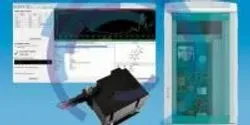Product News

Our two highlighted tradeshows this month include the Materials Research Society Fall Meeting and Exhibit (MRS) and the American Society for Cell Biology’s annual meeting (2014 ASCB/IFCB). The 2014 MRS Fall Meeting takes place November 30-December 5, 2014 in Boston, Massachusetts, featuring over 6,000 presentations. Not long after, the 2014 ASCB/IFCB Meeting–a premier biomedical research conference–runs December 6-10 in Philadelphia, Pennsylvania. Its Keynote Talks will span the origin of life to the cosmos. Remember that the companies highlighted here in Tech News will be exhibiting, but these specific products may not be at the shows.

This month, we highlight companies that will be exhibiting at two upcoming scientific trade shows–the American Association of Pharmaceutical Scientists’ Annual Meeting and Exposition (AAPS 2014) and the Society for Neuroscience’s Annual Meeting (Neuroscience 2014). AAPS 2014 takes place at the San Diego Convention Center from November 2-6 and offers pharmaceutical scientists the opportunity to network with others in their field and check out the latest pharma equipment. Neuroscience 2014 will run November 15-19 in Washington, DC, allowing neuroscientists to present emerging science, learn from experts, forge collaborations with peers, explore new tools and technologies, and advance careers.

A search of Google Trends for “big data” in news headlines reveals almost no interest until 2011, and
then the numbers soar.

This month we highlight companies who will be exhibiting at the American Association for Clinical Chemistry’s Annual Meeting & Clinical Lab Expo (AACC 2014) and the 248th American Chemical Society National Meeting & Exposition (ACS 2014). AACC 2014 will run July 27-31 at McCormick Place in Chicago, Illinois, while ACS 2014 takes place August 10-14 in San Francisco, California’s Moscone Center. Remember that the products shown here may not be at these shows, but the highlighted companies will be on hand to answer any questions you might have.

A forensics investigator dusts a crime scene for fingerprints. When she finds one, she reaches to her holster, pulls out a handheld device, and aims it at the fingerprint. The device captures the image and also the chemical composition. That chemical analysis reveals that the person who left the print had touched ephedrine—an illegal drug, which is a stimulant that goes by many street names, including meow. With this information, the investigators can use biometrics—the fingerprint— to identify the person and the chemical analysis to start piecing together the crime.

It is a summer afternoon and dark clouds are rolling in. You notice that outside your laboratory windows the lightning strikes are getting closer. Your first thought is to back up your data. Your second thought is to shut down your $50,000 spectrometer so electrical surges from lightning strikes don’t kill the sensitive electronics.














